The Rich History of Tapas
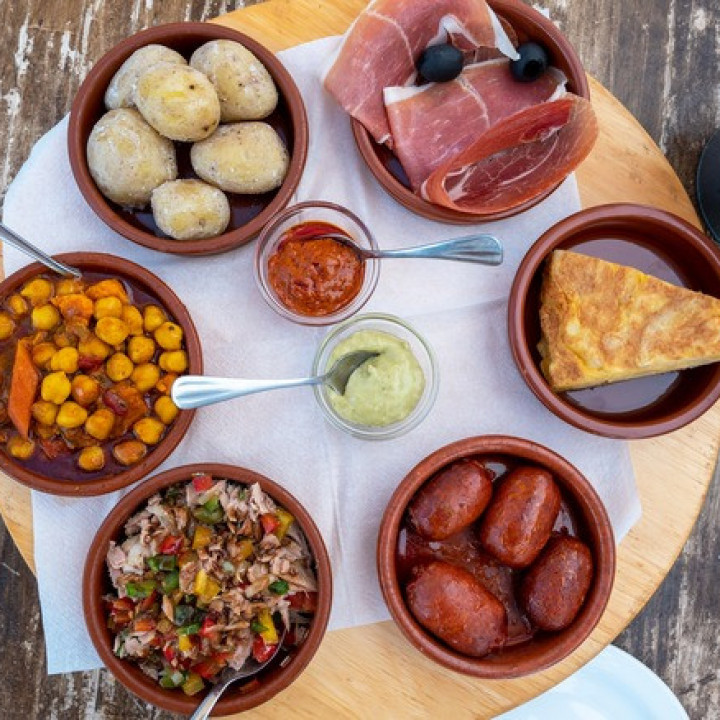
When one thinks of Spanish cuisine, the first image that often comes to mind is that of a table adorned with an array of small, flavourful dishes—tapas. These delightful morsels, each bursting with distinct flavours, represent more than just food; they are a tradition, a culture, and a way of life in Spain. Today, we delve into the fascinating history of tapas, explore their cultural significance across different regions of Spain, and see how this tradition is embraced and celebrated at our very own in-house Tapas Bar, La Bodega.
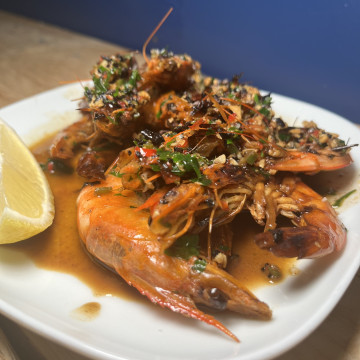
A Culinary Tradition Rooted in History
The word "tapas" comes from the Spanish verb "tapar," which means "to cover." While there are various legends about the origin of tapas, a popular story attributes their inception to King Alfonso X of Castile. According to the tale, the king, while recovering from an illness, was advised to eat small portions of food with wine. He found this combination so beneficial that he decreed all taverns should serve small bites of food with wine, essentially covering the drink to prevent excessive inebriation.
Another legend suggests that tapas originated as a practical solution to keep flies out of one's drink. Bartenders would place a slice of bread or a piece of ham over the glass, effectively keeping pests at bay while providing a tasty snack for patrons. This practice not only added a layer of flavour to the drink but also encouraged customers to linger longer, ordering more wine and food.
Regardless of their exact origin, tapas quickly became an integral part of Spanish culinary culture. Initially served as simple pieces of bread with cheese or ham, they evolved into a diverse array of dishes, showcasing the rich regional flavours and ingredients of Spain.
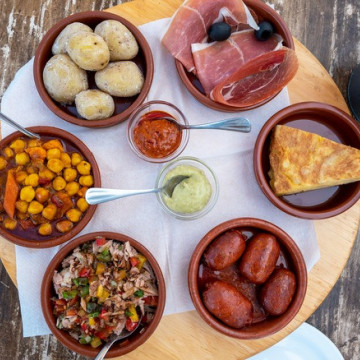
A Tapestry of Flavors Across Spain
As tapas spread across Spain, each region added its unique twist to this culinary tradition. In Andalusia, where tapas are believed to have originated, the dishes often include seafood such as 'boquerones en vinagre' (marinated anchovies) and 'pescaito frito' (fried fish), reflecting the region's coastal influences.
In the northern region of Galicia, tapas might feature 'pulpo a la gallega' (Galician-style octopus) or 'empanadas' filled with tuna or meat, showcasing the area's maritime heritage and love for hearty, robust flavours. Meanwhile, in Catalonia, tapas are influenced by Mediterranean ingredients and might include 'pan con tomate' (bread with tomato) or 'escalivada' (grilled vegetables).
In the Basque Country, tapas take the form of 'pintxos', small bites typically skewered with a toothpick, often featuring gourmet combinations such as 'jamón ibérico' with roasted peppers or ‘bacalao’ (salted cod) with olives. These regional variations highlight the diversity of Spain's culinary landscape, with each area contributing its own flavours and traditions to the rich tapestry of tapas culture.
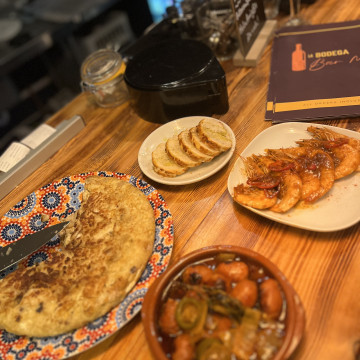
From Simple Snacks to Culinary Art
Over the centuries, tapas have transformed from humble bar snacks into a sophisticated culinary experience. In the early days, they were often simple and rustic, reflecting the local produce and traditional cooking methods. However, as Spain's culinary scene evolved, so did the variety and complexity of tapas.
Today, tapas can range from traditional classics like 'patatas bravas' (fried potatoes with a spicy tomato sauce), 'gambas al ajillo' (garlic shrimp), and 'albondigas' (meatballs), to modern, innovative creations by contemporary chefs. These chefs experiment with flavours, textures, and presentation, creating tapas that are not only delicious but also visually stunning. This evolution highlights Spain's dynamic food culture, where tradition and innovation coexist harmoniously.
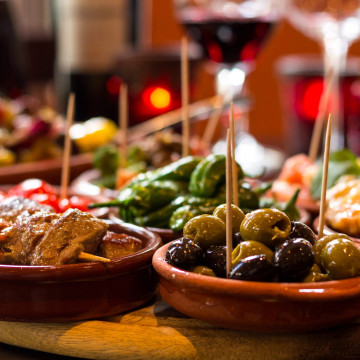
A Global Phenomenon
Tapas have transcended their Spanish origins to become a global culinary phenomenon. In cities around the world, from New York to Tokyo, tapas bars have become popular, offering diners a chance to experience the conviviality and variety of Spanish dining. These international tapas bars often adapt the concept to local tastes, blending Spanish ingredients with regional flavours to create unique fusion dishes.
The global popularity of tapas reflects their universal appeal. The small-plate format encourages sharing, making meals a social experience. Whether enjoyed as a casual snack with friends or as part of a gourmet dining experience, tapas bring people together, fostering a sense of community and connection.
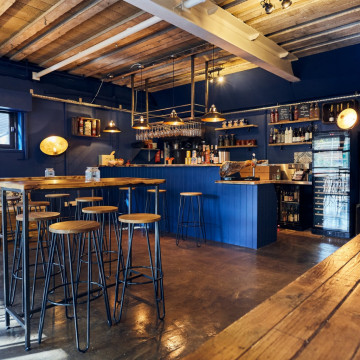
A Slice of Spain in London
At La Bodega in Battersea Spanish, we are proud to continue this rich tradition, offering a genuine and delightful tapas experience that brings a slice of the Spanish-speaking world to London. Our menu features a carefully curated selection of classic and contemporary tapas, each dish crafted with the finest ingredients and a passion for authenticity.
Whether you're a tapas aficionado or new to this culinary tradition, La Bodega invites you to savour the flavours, embrace the culture, and enjoy the warmth of Spanish hospitality. Our tapas are not just food—they are an invitation to slow down, enjoy the moment, and connect with those around you.
A Culinary Heritage That Lives On
The history of tapas is a testament to Spain's rich and diverse culinary heritage. From their humble beginnings as bar snacks to their modern-day sophistication, tapas have become a symbol of Spanish culture and a beloved way of eating around the world. La Bodega embodies this tradition, offering an authentic tapas experience that celebrates the flavours, creativity, and spirit of Spain.
So, whether you're looking to indulge in the familiar taste of old favourites or explore the innovative twists on traditional recipes, La Bodega is the perfect place to experience the timeless appeal of tapas. Join us and embark on a culinary journey that celebrates the rich history and vibrant future of this iconic Spanish tradition.